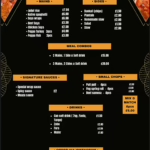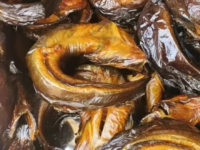Analysis of violence in Benue State from 2009 through 2025 reveals a relentless and alarming increase in conflict intensity. What initially appeared as isolated clashes has evolved into pervasive violence engulfing nearly every corner of the state, resulting in a growing number of casualties.
In the initial years, violent episodes were sporadic and geographically limited. However, by 2013, the spread of unrest became more evident. By 2016, concentrated outbreaks of violence were clearly visible in the local government areas of Agatu, Logo, and Guma. These regions remained focal points of conflict even as the violence expanded to other parts of Benue.
By 2020, violent incidents had engulfed almost the entire state. Data from 2023 and 2024 indicate widespread clusters of attacks across various districts, signaling a transition from isolated disputes to a sustained and widespread crisis. Notably, 2024 and 2025 stand out as particularly lethal years, marked by numerous high-fatality events.
Year-Round Violence Supplants Seasonal Trends
Historically, violence in Benue was closely linked to agricultural cycles, particularly farming and grazing seasons. However, recent data from 2019 to 2025 demonstrate a shift away from these seasonal patterns.
During the rainy season, attacks surged dramatically-from five incidents causing 41 deaths in 2019 to 59 incidents with 281 fatalities in 2024. The deadliest period was 2025, when 52 rainy season attacks resulted in 514 deaths, the highest toll recorded within this timeframe.
Violence during the dry season also escalated. In 2020, only four incidents led to 11 deaths. By 2023, this rose to 22 incidents with 91 fatalities, peaking in 2024 with 31 attacks causing 221 deaths. Although 2025 saw a reduction to eight incidents and 44 deaths during the dry season, the overall trend reflects a significant increase compared to earlier years.
READ ALSO: Meta breaks language barriers by bringing AI-powered translation to WhatsApp
While over 70% of deaths historically occurred during the rainy season, the sharp rise in dry season violence indicates that hostilities now persist throughout the year, depriving communities of any meaningful respite.
Declining Security Operations Amid Rising Violence
Concurrently, security interventions have diminished. Operation Whirl Stroke (OPWS), the joint military initiative aimed at curbing insecurity in Benue, Nasarawa, and Plateau states, has seen a reduction in activity since 2020.
Data reveals a troubling pattern: as OPWS scaled back, fatalities surged. In 2021, deaths surpassed 600, and 2024 witnessed another spike with over 700 fatalities. Despite fewer attacks in 2025 compared to the previous year, the death toll remained alarmingly high at nearly 500.
Between 2019 and 2025, the three states collectively reported 2,818 deaths across 287 violent incidents. Analysts highlight a clear link between the decline in military operations and the rise in violence, with diminished security presence coinciding with some of the deadliest periods.
The prolonged conflict has had devastating consequences. Hundreds of thousands have been displaced across Benue, leaving communities exposed and destabilized. Areas such as Guma, Logo, and Agatu, identified as violence hotspots, have also suffered the most from displacement and destruction of agricultural lands.
The impact on agriculture is particularly critical, given Benue’s status as a key food-producing region in Nigeria. Repeated attacks during crucial planting and harvesting seasons have severely disrupted farming activities, leading to reduced yields and threatening regional food security. The comprehensive data from 2009 to 2025 paints a stark picture: violence in Benue has become entrenched, widespread, and increasingly deadly over time.
By: James Odunayo
























